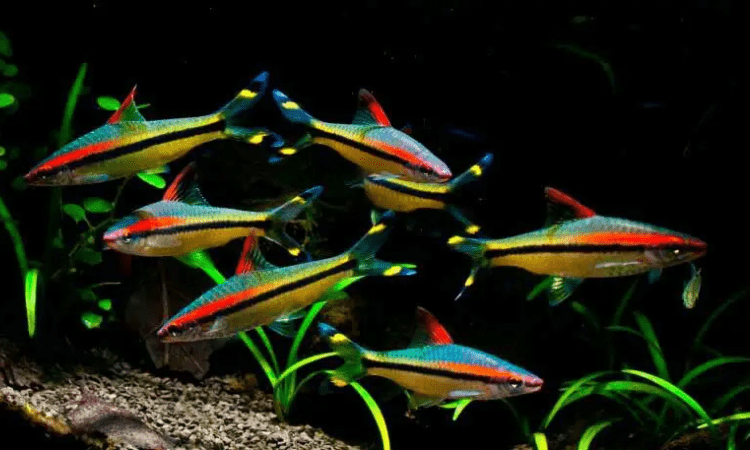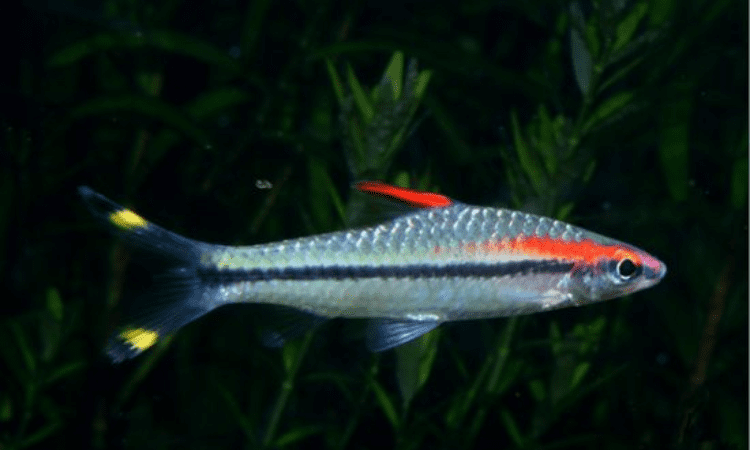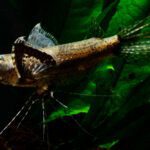Roseline Sharkscare Feeding and Habitatroseline Sharks: Salutations, fellow aquarists! If the stunning Roseline Sharks (Denison Barb) has piqued your interest, you’re in for a real treat. These striking fish will liven up any aquarium with their brilliant colors. In this guide, you will learn all about Roseline Sharkscare Feeding and Habitatroseline Sharks, what they consume, and what kinds of aquariums are ideal for them.
Table of Contents
Roseline Sharks: A Familiar Face
Let’s begin by saying hello to our aquatic friends. Roseline sharks, with their striking red and gold markings, are beloved by those who enjoy keeping fish in aquariums. Native to the fast-moving rivers of India, they bring a splash of color to aquariums. What can we do to ensure their happiness and well-being while they are under our care?
Making your home cozy is crucial, and that includes the proper configuration of your aquarium. Large aquariums with plenty of swimming room are ideal for roseline sharks. Get a tank with a capacity of 50 gallons or more to accommodate their busy lifestyle. A fine substrate and a couple of hiding spots enhance and imitate their natural habitat.
Like the Goldilocks fish, Roseline sharks need the perfect water conditions to thrive. The ideal temperature range is 22–26°C (72–79°F), and the ideal pH range is 6.5–7.5. Reliable filtration equipment and periodic water changes keep their environment clean.
Just like their school of friends, Roseline Sharks are friendly and outgoing. Groups of five or more will help alleviate stress. When fish like tetras, rosboras, and gouramis get along well with one another, it forms a harmonious undersea society.
How to Feed:
Now we’ll talk about the path that a roseline shark takes from its belly to its heart. If you tell them what to eat, they’ll be able to make the most of those bright colors.
Optimal Health through a Diverse Diet:
Roseline Just like people, sharks thrive on a diverse diet. Feed them high-quality flakes, pellets, and live or frozen foods, like as brine prawns or bloodworms. This balanced diet will help them develop normally and look their best.
Think of the meal as a buffet party, complete with set serving hours and servings. You should feed them small meals twice a day that they can easily complete in two or three minutes. You and your aquatic pals will both get the benefits of clean water and reduced overfeeding when you do this.
Constructing an Abundant Setting
Creating a Roseline sanctuary in your aquarium requires more than simply water and food. The key is to design a space that complements their vivacious personality.
Exploration Through the Use of Aquascaping:
Be creative and think of your aquarium as a playground. Incorporate plants, rocks, and driftwood into the space to make it more interesting. Because Roseline Sharks are naturally inquisitive, these alterations give them more opportunities to explore and hide.
The ideal lighting conditions for roseline sharks include a balance of light and shade. The mild lighting mimics the dappled sunlight that naturally occurs in their rivers. In their aquatic home, it’s like setting the scene for a peaceful swim.

Variables in Breeding:
As you delve deeper into the world of roseline sharks, the idea of caring for these intriguing fish can catch your eye. Here are some things to keep in mind if you’re curious about the intriguing world of Roseline Shark breeding.
Gender Differentiation: Male Roseline Sharks may be hard to distinguish from females. During mating season, particularly when carrying eggs, females tend to be rounder. Although men may appear to have slightly more vibrant colors, the disparity is not particularly large.
Imagine a wooing dance beneath the ocean’s surface as you think about spawning behavior. Roseline shark mating rituals are intricate, and the male performs darting movements and colorful displays to attract the female. When a male fertilizes a female’s eggs, you can find yourself with a new aquatic relative.
Roseline, the Caretaker of Shark:
You must exercise extreme caution when handling any young fish that may hatch from your Roseline Sharks. Fostering an encouraging environment is key to a child’s healthy growth and development.
Keep Fry Separated from Adults:
To protect fry from predators, you should consider keeping them in a separate tank specifically designed for breeding or nursery purposes. This way, you can offer them the specialist care they need and monitor their growth without worrying about other tank occupants getting in the way.
Baby Foods and Infusoria:
Roseline Similar to how human infants have specific nutritional needs, shark fry do as well. As a first food source, they will eat infusoria and other small creatures. As your baby fish grow, you can supplement their diet with finely crushed flakes and fish food designed for young fish.
Addressing Common Issues:
On every aquarium adventure, you’ll encounter challenges. Here are some common issues that players encounter with Roseline Sharks, and how to fix them so you may enjoy playing the game without any trouble.
When your Roseline Sharks show symptoms of stress, such as lethargy or a change in their coloration, it’s important to take stock of their environment. Make sure the water is just right, that your tankmates aren’t overly stressed, and that there are plenty of hiding spots for them.
Routine health checkups are crucial for early problem detection. Keep an eye out for signs of diseases like fin rot or ich. New pets should be quarantined before being introduced to the main tank to prevent the spread of sickness.
To conclude:
Providing Roseline Sharks with top-notch care, a varied diet, and an enriching environment allows one to fully experience their fascinating world. If you want these lively fish to thrive and show off their vibrant colors, remember to keep your balance when you go on your aquatic excursion. So, whether you’re an aquarium expert or just starting, you should give in to the irresistible allure of Roseline Sharks. To the joy of fish keeping!
I hope you like the part where we talked about Roseline Sharkscare Feeding and Habitatroseline Sharks. For more content like this, visit our website Centralpetsandaquariums.com.






What i don’t understood is actually how you are no longer actually much more well-favored than you may be now. You’re very intelligent. You understand thus significantly with regards to this subject, made me individually imagine it from so many varied angles. Its like women and men are not interested except it?¦s something to accomplish with Lady gaga! Your personal stuffs outstanding. All the time handle it up!